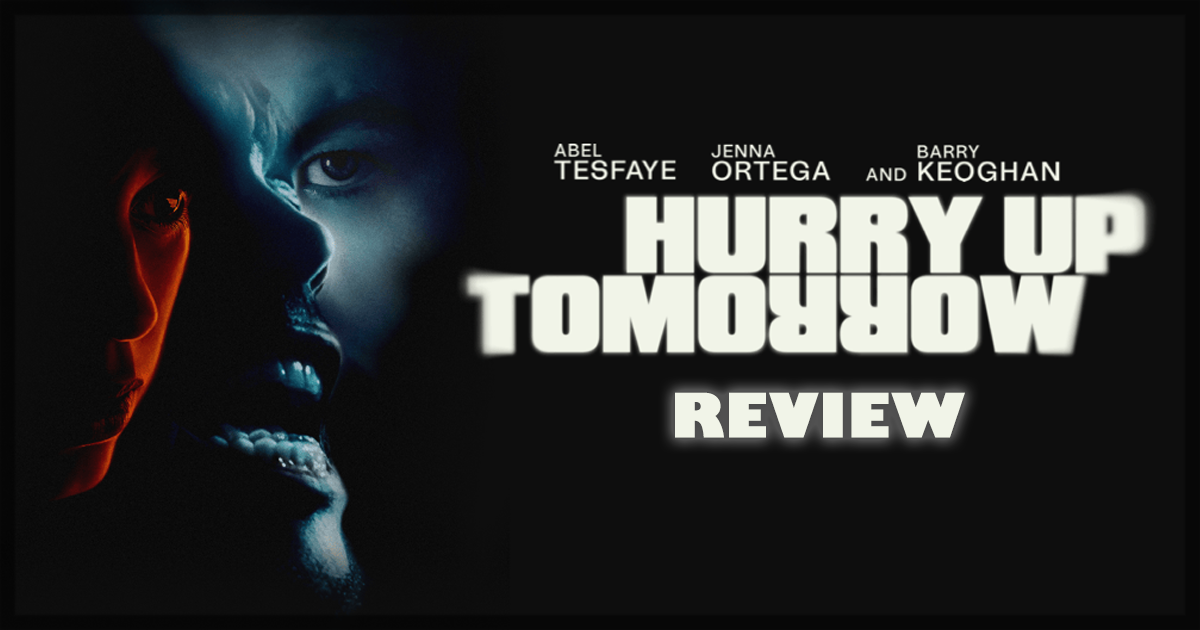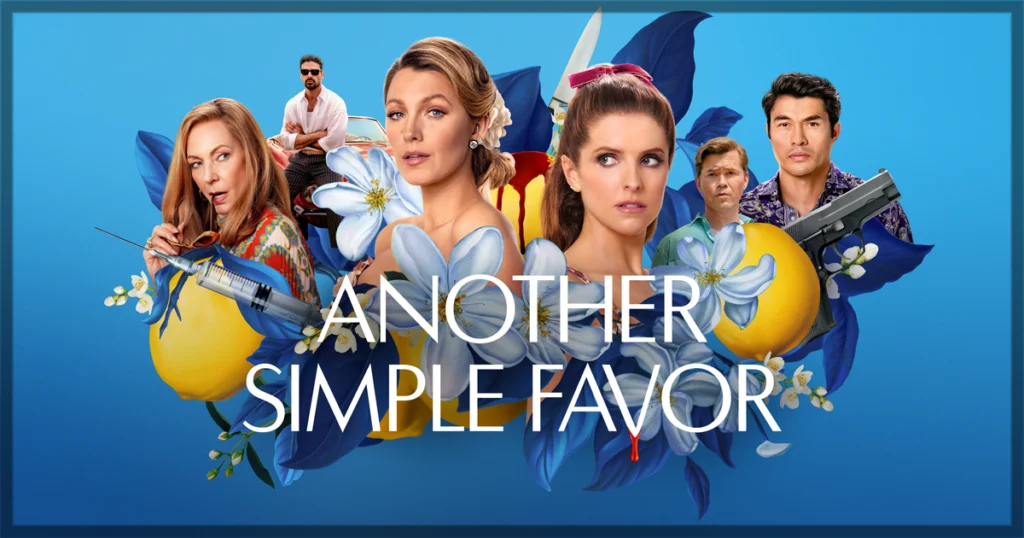Hurry Up Tomorrow is directed by Trey Edward Shults (It Comes at Night), a filmmaker who here collaborates with Abel “The Weeknd” Tesfaye and Reza Fahim (The Idol) on the screenplay. Starring Jenna Ortega (Beetlejuice Beetlejuice) and Barry Keoghan (The Banshees of Inisherin), with Tesfaye himself playing a fictionalized version of his persona in the lead role, the film tells the story of a famous musician haunted by insomnia and nightmares, as he spirals into an emotional crisis. During one turbulent night, he meets Anima (Ortega), a mysterious fan who takes him on a journey that challenges everything he thought he knew about himself and forces him to confront the core of his existence.
Hurry Up Tomorrow promises an intense audiovisual odyssey, delving into themes like depression, fame, and artistic self-expression. Yet, despite the immense talent both in front of and behind the camera, the final result is astonishingly frustrating – a movie so aggressively stylized it ironically lacks impactful subtext, narrative coherence, and, above all, genuine emotion.
From the outset, the visual ambition of cinematographer Chayse Irvin (Blonde) is undeniable. Silhouettes framed against pulsing lights, striking compositions from off-kilter angles, and bold uses of color and blur give the film a distinctive aesthetic. That said, like most elements in Hurry Up Tomorrow, excess quickly becomes a problem. The incessant use of shaky cam, soft focus lenses, and repeated stylistic tricks makes the visual experience not just exhausting but alienating. Shults and Irvin seem intent on hypnotizing the viewer in a stylistic fog – but the spell wears off due to repetition and the lack of narrative momentum.
In fact, it’s precisely in the storytelling where Hurry Up Tomorrow falls apart. For much of its runtime, the audience is tossed from scene to scene with no emotional compass or dramatic logic. Dreamlike and hallucinatory sequences – often fueled by substances or metaphorical symbolism – feel more like extended music videos than parts of a cohesive story. There’s no real character development, no tangible thematic evolution. Everything revolves around Tesfaye’s character – a toxic, egocentric, emotionally impenetrable figure – without any attempt to create empathy or offer insight into his perspective.
The third act delivers perhaps the clearest expression of the movie’s intentions but for all the wrong reasons. In a long expositional monologue, the protagonist’s feelings and actions are justified through a dramatic – or rather, melodramatic – reading of his own lyrics. Ortega gives everything she’s got in that scene, arguably the most earnestly acted moment in the entire film, but even her committed delivery can’t conceal the narcissistic undertone tainting the climax. It plays less like emotional catharsis and more like a thinly veiled act of public validation. It feels like a desperate attempt to convince the audience that the pain in Tesfaye’s songs holds universal value and poetic depth – when, in reality, the script reduces everything to the tired notion of “a girl left me, hence I’m depressed.”
This reductive approach to such complex topics as mental health and depression is perhaps the movie’s most disappointing issue. Rather than sincerely exploring the emotional and psychological layers of its characters, the script opts for superficiality cloaked in pretentiousness. Pain is presented as aesthetic, not human experience. Suffering becomes a visual and lyrical prop, stripped of empathy or reflection.
Ortega and Keoghan deserved far more than this directionless journey. Their characters, like all others in the film, are trapped in a latent toxicity that’s never deconstructed or challenged. There’s no redemption, no critique, no transformation – just a build-up of self-destructive behavior glorified by a camera far too enamored with its protagonist.
Structurally, Hurry Up Tomorrow is a labyrinth of failed intentions. The editing seems designed to induce a trance but quickly devolves into a test of patience. Abrupt transitions, a lack of dramatic rhythm, and a constant blur between reality and hallucination make the experience disjointed and tiresome. Any deeper reflection fails to materialize. Everything remains on the surface: the image of the tortured artist, the endless party as a metaphor for emptiness, the woman as a symbol of desire and abandonment. There’s no interrogation – only a recycling of worn-out clichés.
Final Thoughts on Hurry Up Tomorrow
Hurry Up Tomorrow is one of the most convoluted, frustrating movies of the year. A glaring example of how style can drown substance, and how unchecked artistic ego can turn a potentially compelling work into an exercise in hollow self-indulgence. Despite some undeniable visual qualities and earnest performances from the cast, Trey Edward Shults and Abel “The Weeknd” Tesfaye fall short on all essential fronts: narrative, structure, emotion, and purpose. It’s a murky experience that leaves viewers perplexed and distant – a wasted opportunity for everyone involved.
Rating: D
Hurry Up Tomorrow is now playing in theaters.
Learn more about the film, including how to buy tickets, at the official website for the title.


